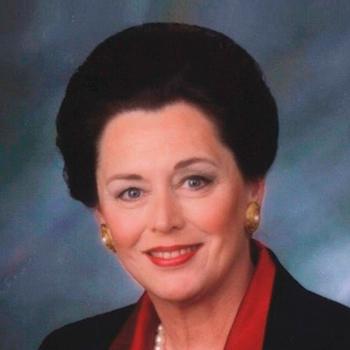January 2024 member spotlight
Donna Ailport Woodson, MD
Professor Emerita
Department of Medical Education
UT College of Medicine and Life Sciences
- AMA delegate from Ohio (23 years)
- President, The Academy of Medicine of Toledo & Lucas County (1st woman in 150 years)
- President, Toledo-Lucas County Board of Health (16 years; 1st woman)
- Board of Trustees, UT College of Medicine Alumni Affiliate (presently serving)
- Diplomate, ABFM; Fellow, AAFP
Life after medicine
After 50 years as a physician, many of them as a busy private practice doctor with a board certification in family medicine, I found medicine to be the most rewarding career that I could have chosen. I was invited to become a full-time faculty member and professor and taught medical students at the UT College of Medicine and Life Sciences and I was chosen to become the director of women’s health.
Q: As a physician leader, why is physician advocacy important to you? How can physicians have a significant impact outside the practice of medicine?
A: Most physicians have been very respected members of our communities, known for their dedication, long hours and ongoing concern for their patients. In that effort they may have neglected families, friends, and social activities. The word retirement is unfamiliar to them and when that time arrives it may leave them unprepared, feeling a lack of self-respect, loneliness, and sometimes depression. They are unaware of how to reconnect with others. They miss contact with their patients. We owe them our support, our advocacy, just as we advocate for others.
If we are in or near a medical school setting, try checking with the office of student affairs or faculty affairs to elicit volunteer opportunities. Think about joining or becoming more active in alumni committees. They often have very interesting adventures (local museums with docent programs; sporting events; book clubs, many things you haven’t had time for in the past). As an example, I had a recent message from our College of Medicine Alumni Affiliate asking to partner with the Engineering Department for a wine tasting.
Q: What efforts must be taken to increase the percentage of physicians who conduct research and/or teach medical trainees?
A: If you are interested in preventive medicine and public health, check with your local health department for some volunteer activities or board openings. Stay active with your AMA membership (especially the Senior Physicians Section) and your specialty societies. I have also enjoyed the Academic Physicians Section, Women Physicians Section and the Organized Medical Staff Section.
I have an ongoing elective about public and population health which keeps me in touch with our students and prepares them for the epidemiology of residency clinics. The other elective I continue as a volunteer for is Art & Medicine: Using Visual Literacy to Improve Your Diagnostic Skills.
Q: What was your path to entering academic medicine?
A: My path to entering academic medicine was my association with my medical school as a community clinical assistant professor. The students were sometimes with me for a month, and it was always a wonderful experience. My association with medical students has been a joy of my life and many have become like members of my family.
When I first became the advisor for our large AMA Medical Student Section on campus, the extraordinary student president became a friend of our family, and I was invited to sit with his family at his wedding in June. The invitation to join the full-time faculty confirmed my decision to alter my career path.
Q: In a generation where women have closed the sex gap in medical school admissions, women remain underrepresented in upper faculty ranks.
Do you have any advice for those younger counterparts wishing to serve as residency program directors, or wishing to serve on editorial boards of medical journals?
A: What a challenge it is for women in medicine. My best suggestion here is that you discuss the area of specialty and you both work to determine AMA members who attend Annual and Interim Meetings and are directors of that specialty residency or journal editorial board. You can introduce them, and have the student write a follow-up letter. This is a wonderful advocacy tool, but it does take some pre-planning! Contact with members of the WPS is available to discuss these areas.
We are encouraged to be advocates for our patients and the community. Our colleagues in medicine should certainly be on that list for advocacy.
Contact us
Have information about SPS members doing great work? Email us at sps@ama-assn.org.




